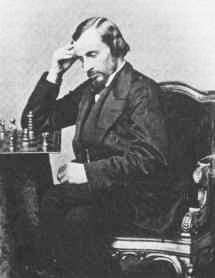
Paul Charles Morphy was an American chess player. During his brief career in the late 1850s, Morphy was acknowledged as the world's greatest chess master.

Howard Staunton was an English chess master who is generally regarded as the world's strongest player from 1843 to 1851, largely as a result of his 1843 victory over Pierre Charles Fournier de Saint-Amant. He promoted a chess set of clearly distinguishable pieces of standardised shape – the Staunton pattern promulgated by Nathaniel Cooke – that is still the style required for competitions. He was the principal organiser of the first international chess tournament in 1851, which made England the world's leading chess centre and caused Adolf Anderssen to be recognised as the world's strongest player.

Karl Ernst Adolf Anderssen was a German chess master. He won the great international tournaments of 1851 and 1862, but lost matches to Paul Morphy in 1858, and to Wilhelm Steinitz in 1866. Accordingly, he is generally regarded as having been the world's leading chess player from 1851 to 1858, and leading active player from 1862 to 1866, although the title of World Chess Champion did not yet exist.
The Ruy Lopez, also called the Spanish Opening or Spanish Game, is a chess opening characterised by the moves:
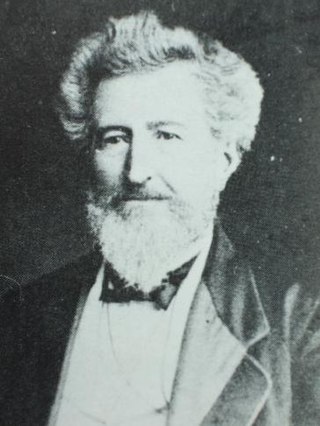
Pierre Charles Fournier de Saint-Amant was a leading French chess master and an editor of the chess periodical Le Palamède. He is best known for losing a match against Howard Staunton in 1843 that is often considered to have been an unofficial match for the World Chess Championship.
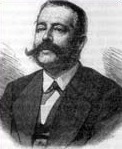
Jean Dufresne was a German chess player and chess composer. He was a student of Adolf Anderssen, to whom he lost the "Evergreen game" in 1852.
Anderssen's Opening is a chess opening defined by the opening move:
The Four Knights Game is a chess opening that begins with the moves:
Handicaps in chess are handicapping variants which enable a weaker player to have a chance of winning against a stronger one. There are a variety of such handicaps, such as material odds, extra moves, extra time on the chess clock, and special conditions. Various permutations of these, such as "pawn and two moves", are also possible.

Romantic chess is a style of chess popular in the 18th century until its decline in the 1880s. This style of chess emphasizes quick, tactical maneuvers rather than long-term strategic planning. Romantic players consider winning to be secondary to winning with style. The Romantic era of play was followed by the Scientific, Hypermodern, and New Dynamism eras. Games during this era generally consisted of 1.e4 openings such as the King's Gambit and Giuoco Piano. Queen-side pawn openings were not popular and seldom played. The Romantic era is generally considered to have ended with the 1873 Vienna tournament where Wilhelm Steinitz popularized positional play and the closed game. This domination ushered in a new age of chess known as the "Modern", or Classical school, which would last until the 1930s when hypermodernism began to become popular.
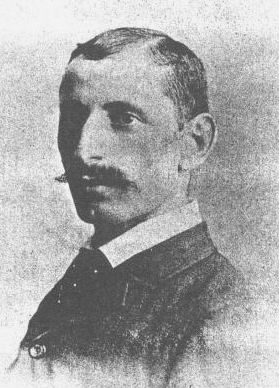
Samuel or Salomon Lipschütz was a chess player and author. He was chess champion of the United States from 1892 to 1894.
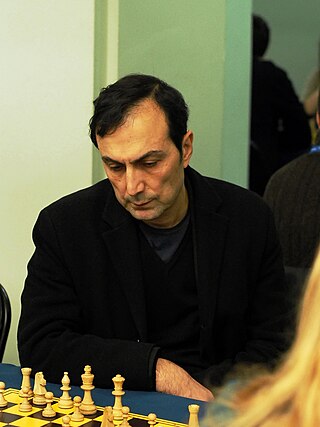
Kamran Shirazi is an International Master of chess, who won the Iranian Chess Championship in 1972. Born in Tehran, he has represented Iran, the United States, and France. He moved to the United States in the late 1970s and quickly became one of the most active players in the country, winning many tournaments, including the Southern California Open, the World Open, the National Open, and the Memorial Day Classic.
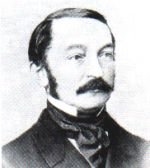
Dr Ludwig Erdmann Bledow was a German chess master and chess organizer . In 1846 he founded the first German chess magazine, Schachzeitung der Berliner Schachgesellschaft, which would later take the name Deutsche Schachzeitung.
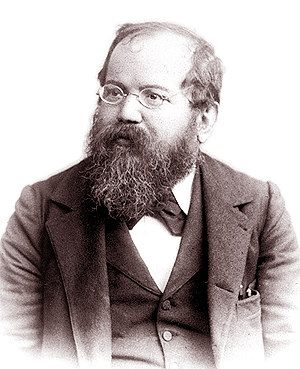
The World Chess Championship 1886 was the first official World Chess Championship match contested by Wilhelm Steinitz and Johannes Zukertort. The match took place in the United States from 11 January to 29 March, the first five games being played in New York City, the next four being played in St. Louis and the final eleven in New Orleans. The winner was the first player to achieve ten wins. Wilhelm Steinitz won the match 10–5, winning his tenth game in the twentieth game of the match. There were five draws.
John William Schulten (1821–1875), also spelled Johann Wilhelm, was a 19th-century chess master from Germany and the United States. In the 1840s and 1850s, he traveled widely in Europe and the United States to play some of the best chess players in the world—Adolf Anderssen, Alexandre Deschapelles, Daniel Harrwitz, Bernhard Horwitz, Lionel Kieseritzky, Paul Morphy, Gustav Neumann, Jules Arnous de Rivière, Eugéne Rousseau, Pierre St. Amant, Charles Stanley, Von der Lasa, and Johannes Zukertort—losing to most of them. Although he lost matches against Kieseritzky and Morphy, he did beat both of them once. His only win against Morphy was in New York City in 1857:
Frederick Horace Deacon was a British chess master. He is mainly notable for spurious claims to have drawn against Paul Morphy, making himself both notorious and unpopular.

Napoleon Marache was a chess player, problem composer, and journalist. He was born in France and moved to the United States at around 12 years of age. He learned the game of chess around 1844, and immediately became a devotee. He began composing chess problems and writing about chess the following year. In the mid-19th century, he was both one of America's first chess journalists and one of its leading players. In 1866, he published Marache's Manual of Chess, which was one of the country's first books on chess, and also one of its first books on backgammon. He is perhaps best known today for having lost a famous game to Paul Morphy.
The Staunton–Morphy controversy concerns the failure of negotiations in 1858 for a chess match between Howard Staunton and Paul Morphy and later interpretations of the actions of the two players. The details of the events are not universally agreed, and accounts and interpretations often show strong national bias.

James A. Leonard was a young American chess master, who grew up as a son of poor Irish immigrants in New York City. He learned to play chess at age 16 or 17. Before his 20th birthday, he was already famous for his fierce attacking play and prowess at blindfold chess, at which he played as many as ten games simultaneously.
Wincenty Budzyński was a Polish politician agent and Polish–French chess master.
